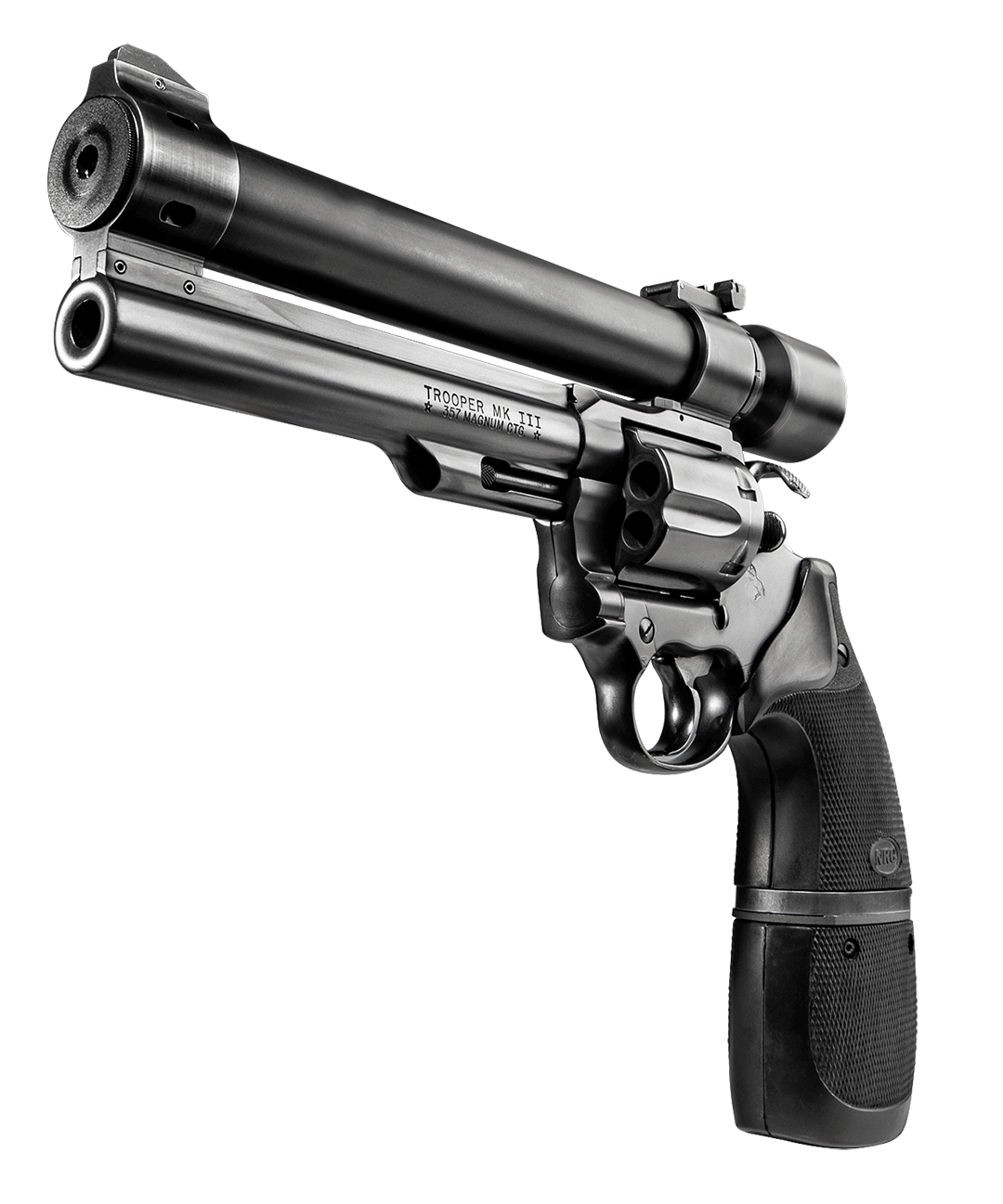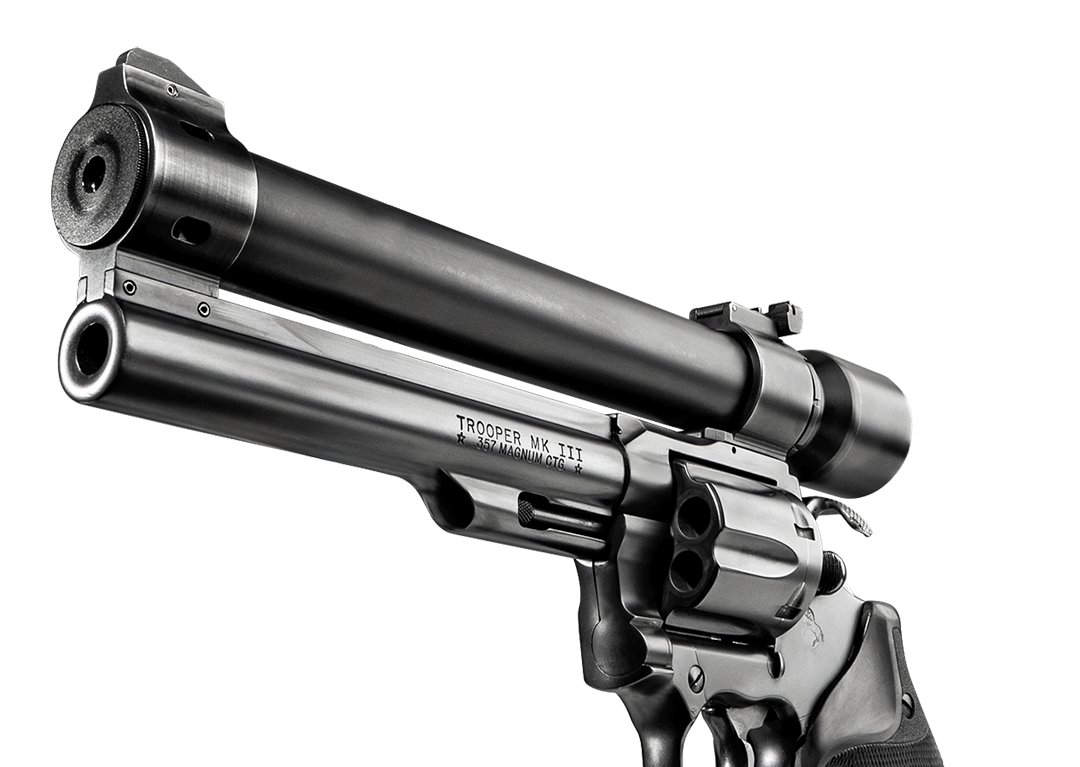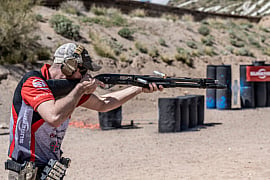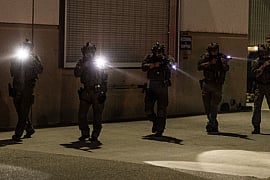The Laser Products LPC Model 7 laser aiming device is widely regarded as a milestone product in the firearms industry, an accessory that redefined what was possible in tactical shooting.
Before its introduction, firearms shooters had to rely solely on sight picture — either through iron sights or a scope — for accuracy when acquiring a target. The LPC Model 7 would shift the paradigm by giving true definition to the term “pinpoint accuracy.”

Compact laser aiming devices may be commonplace today, but the LPC Model 7 looked like a gadget straight out of a Star Wars movie when it was unveiled in October 1979. Only, it wasn’t science fiction. It was pure science. The LPC Model 7 was developed in Southern California, where pioneering laser engineer Dr. John Matthews chose to combine his expertise with his admiration for firearms. Because a laser’s beam is tightly concentrated with minimal divergence, it can provide a pinpoint visual “spot” when it is pointed at an object. Dr. Matthews knew that being able to place this spot on a target could provide critical information for a shooter.
Even so, the LPC Model 7’s legacy wasn’t assured when it was first designed. In fact, were it not for Dr. Matthews’ passion, it might never have been produced.
“We had actually started working on it when I was at Newport Corporation,” Dr. Matthews recalls. “We first tried it back in 1972. To get something small was a challenge, and there was really no market for it. I had purchased a pair of AR180 rifles to put the laser sight on, but we decided that the helium-neon lasers were just too big. I still have those rifles.” [laughs]
Parent company Newport Corporation was not interested in investing the necessary resources to develop Dr. Matthews’ idea. He was so confident in its potential, however, that he was willing to strike out on his own. In what must have seen as a gamble by many of his colleagues, Dr. Matthews left his position as President of Newport Corporation and purchased the company’s laser sight business. He went on to found Laser Products Corporation, the company that would later become known as SureFire, to prove his theories.
To understand just how far ahead of the technological curve Dr. Matthews was traveling, one might benefit from a little historic perspective: Jimmy Carter was the President of the United States. The Oldsmobile Cutlass was the U.S.A.’s best-selling automobile. Disco was on its way out as a musical subculture. And consumer-based laser products of any kind had yet to enter the mainstream. The first IBM commercial laser printer was still in its infancy, and the first consumer-level model was 7 years in the future.
And a suitable laser for use with a firearm didn’t yet exist despite Dr. Matthews’ vision. Similar to the evolution of the computer, the sheer size and bulk of the hardware hampered the pace of development. That would change with the LPC Model 7.
“We had Hughes Aircraft develop the laser itself,” Dr. Matthews recalls. “We asked them to build a rugged one, and they did, and we got it done. It took us about three years before we were able to introduce it.”
The world’s first commercially available laser sighting system, the LPC Model 7 was sold as a complete, laser-aimed weapon. It featured a helium-neon laser tube mounted atop a Colt Trooper .357 Magnum revolver. The laser was fueled by a large, Ni-Cad battery back integrated with the gun’s custom Pachmayr grip. Once zeroed, the Model 7 provided unprecedented levels of speed and accuracy when acquiring a target by allowing the shooter to see the exact impact point of each and every shot.
It’s interesting to note that this new technology was a stark contrast to the first weapon that hosted it. When asked why the Colt Trooper was the model of choice, Dr. Matthews responds, “Good question. I think I was carrying a Colt Python with a 6-inch barrel as my personal gun at the time. That might have influenced why we went with Colt and not Smith & Wesson.”
Regardless, the LPC Model 7’s performance validated Dr. Matthews’ concept, and the Laser Products team continued to evolve and perfect newer and better products. Soon, LPC laser sights were developed for popular long-gun models, including the Remington 870 shotgun, Ruger Mini-14 and AC556 rifles, and the iconic Colt M16. Many of these were developed simultaneously with accessory laser sighting systems for more weapon models, such as the H&K MP5 and HK94.
Laser Products Corporation eventually changed its name to SureFire, and SureFire continues to be the innovator in laser aiming devices today. Continuing to lead the field it pioneered, it shifted the paradigm again in the 1990s, introducing the word’s first solid-state laser aiming modules, such as the 7LSM, L70 and L72. These versatile units, which could be easily swapped onto a variety of gun models and quickly zeroed, are the forefathers of the modern WeaponLight/laser aiming device. Current SureFire models, such as the XVL2, X400, XC2, and XC2-A-IRC, continue a legacy that began more than four decades ago and continues to this day.
“We continue to do what needs to be done, and we have a fairly expansive agenda.” Dr. Matthews says. “It’s satisfying to me that we’re able to do it, and it’s also interesting that we don’t have any real competition at the level we are doing it.”
SureFire continues to be the most trusted name in the market it pioneered. That all started with the LPC Model 7.




